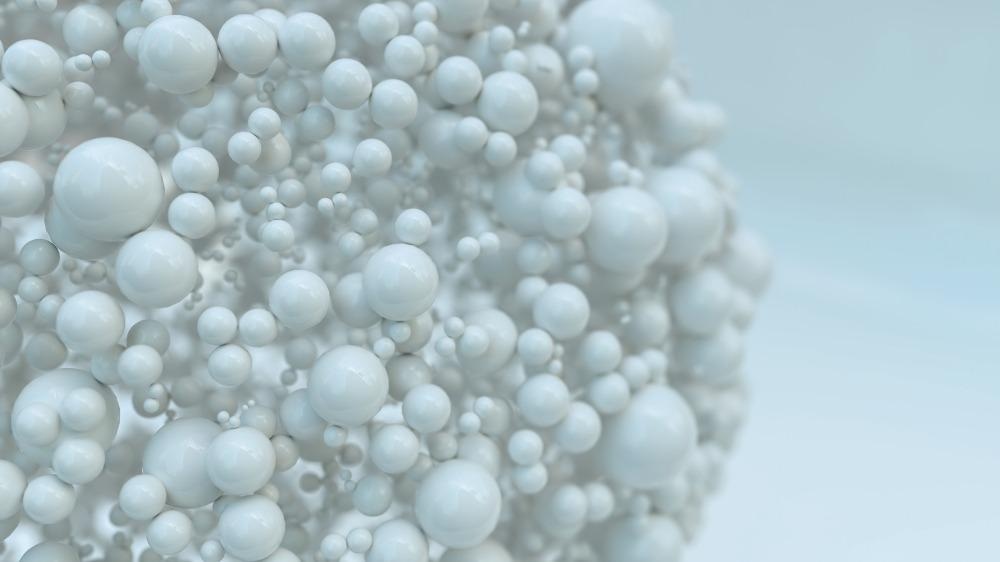A recent study published in the journal ACS Applied Nano Materials examines the advancement of flexible micro-supercapacitors with laser-induced hydrothermal growth of iron oxide nanoparticles on a variety of substrates.

Study: Laser-Induced Hydrothermal Growth of Iron Oxide Nanoparticles on Diverse Substrates for Flexible Micro-Supercapacitors. Image Credit: Crevis/Shutterstock.com
The manufacturing of modern microdevices necessitates the patterned development of functional nanomaterials on a specific substance.
Crystalline Polymorphs of Iron Oxide
Wüstite, hematite, and magnetite are crystalline polymorphs of iron oxide. In several applications such as photocatalysis, photovoltaic cells and batteries, and drug delivery applications, crystalline iron oxides have been thoroughly investigated.
There has also been a lot of research done on amorphous iron oxide nanoparticles for lithium-ion batteries and the catalysis of oxygen evolution reactions. Because of their high specific capacitance, they have also been employed in supercapacitors as active materials.
Importance of Laser-Carbonized CPI (LCCPI)
Supercapacitors are a hybrid of batteries and capacitors which have a high charge/discharge rate and power density. Microdevices (MSCs) that are flexible and portable are becoming more common.
Flexible MSCs can be made by laser carbonizing polyimide (PI) or colorless polyimide (CPI) sheets. In MSCs, laser-carbonized CPI serves as a current collector as well as an active material. Because LCCPI MSCs only use electric double-layer capacitance to store energy, they have low areal capacitance.
Pseudo capacitance nanomaterials, including transition metal oxide/hydroxide nanomaterials, can increase MSC micropattern capacitance.
On LCCPI micro patches, iron oxide nanomaterials must be synthesized to form MSCs. Magnetic patterning, soft lithography, microcontact printing, and synthesis on pre-patterned surfaces are some ways for structuring iron oxide nanoparticles. Although these techniques have been lab-tested, these solutions need additional procedures and costs. Therefore, designing hydrothermal synthesis for iron oxide nanoparticles is still quite difficult.
Laser-Induced Hydrothermal Growth (LIHG) Process
Transition metal oxide nanomaterials such as ZnO, TiO2, and MnO2 have recently been formed using laser-induced hydrothermal growth (LIHG). Pre-deposited seed layers were required because the target metal oxide nanoparticles and the substrate materials have different lattices. Because producing enough nanomaterials took so long, it could only be used for large-area patterning.
To create 3D domes using iron oxide nanoparticles, a novel LIHG technique is presented in this work. A laser beam targets various laser-absorbing materials. Because iron oxide NPs self-nucleate, no seed layer is needed for the LIHG process.
The microdome's location can be readily controlled by shifting the substrate's stage, accelerating the growth rate. As a consequence of the LIHG process's speed, iron oxide NPs can be designed digitally utilizing 2D laser scan equipment and computer software. The LIHG approach is then used to create flexible iron oxide NP-loaded LCCPI microdevices.
Research Conclusions and Future Prospects
In this study, the LIHG approach was used to generate microdomes of iron oxide NPs. A high-temperature field was formed by focusing a continuous wave laser beam over various absorber substrates.
Compared to the typical hydrothermal synthesis of iron oxide nanomaterials, LIHG provides advantages in terms of speed, patterning, seedless growth, location selectivity, and substrate compatibility.
Irradiating iron oxide nanoparticles yielded particles hundreds of nanometers in diameter. By scanning focused laser beams utilizing 2D laser scanning equipment coupled to computer software, LIHG allows flexible patterning of iron oxide nanostructures.
The LIHG approach does not need a seed layer. A simple move of the substrate permits fine control of iron oxide NP production.
The LIHG method can be used on any material that can absorb laser radiation. It can also be used to create flexible microdevices using LCCPI sheets and iron oxide NPs. It is anticipated that this technique can be utilized to create flexible microelectronics based on iron oxide NPs in the future.
Reference
Kong, H., Kim, H., Hwang, S., Mun, J., & Yeo, J. (2022). Laser-Induced Hydrothermal Growth of Iron Oxide Nanoparticles on Diverse Substrates for Flexible Micro-Supercapacitors. ACS Applied Nano Materials. Available at: https://pubs.acs.org/doi/10.1021/acsanm.2c00049.
Disclaimer: The views expressed here are those of the author expressed in their private capacity and do not necessarily represent the views of AZoM.com Limited T/A AZoNetwork the owner and operator of this website. This disclaimer forms part of the Terms and conditions of use of this website.